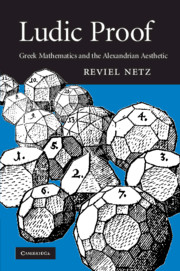1 - The carnival of calculation
Published online by Cambridge University Press: 29 July 2009
Summary
THE STOMACHION: MOTIVATING THE DISCUSSION
My moment of revelation – indeed, the starting point for writing this book – was while trying to make sense of Archimedes' Stomachion. This treatise, surviving on a single parchment leaf containing the introduction, a preliminary proof, and one stump of a proof – all mutilated and difficult to read – has gained little scholarship since its first publication by Heiberg in 1915. I would have never paid it much attention myself – it did not appear to be a “serious” work – but it is after all a page out of the Archimedes Palimpsest, and just looking at the parchment one could not resist the temptation to work on it. The page looked to be in such a bad shape, surely Heiberg did not manage to read it satisfactorily!
My reading did not add many words to those read by Heiberg. But I was probably the first person in many years to have read, slowly and attentively, the introduction to the Stomachion. I quote a tentative translation:
As the so-called Stomachion has a variegated theoria of the transposition of the figures from which it is set up, I deemed it necessary: first, to set out in my investigation of the magnitude of the whole figure each of the <figures> to which it is divided, by which <number> it is measured; and further also, which are <the> angles, taken by combinations and added together; <all of the above> said for the sake of finding out the fitting-together of the arising figures, whether the resulting sides in the figures are on a line or whether they are slightly short of that <but so as to be> unnoticed by sight. […]
- Type
- Chapter
- Information
- Ludic ProofGreek Mathematics and the Alexandrian Aesthetic, pp. 17 - 65Publisher: Cambridge University PressPrint publication year: 2009



